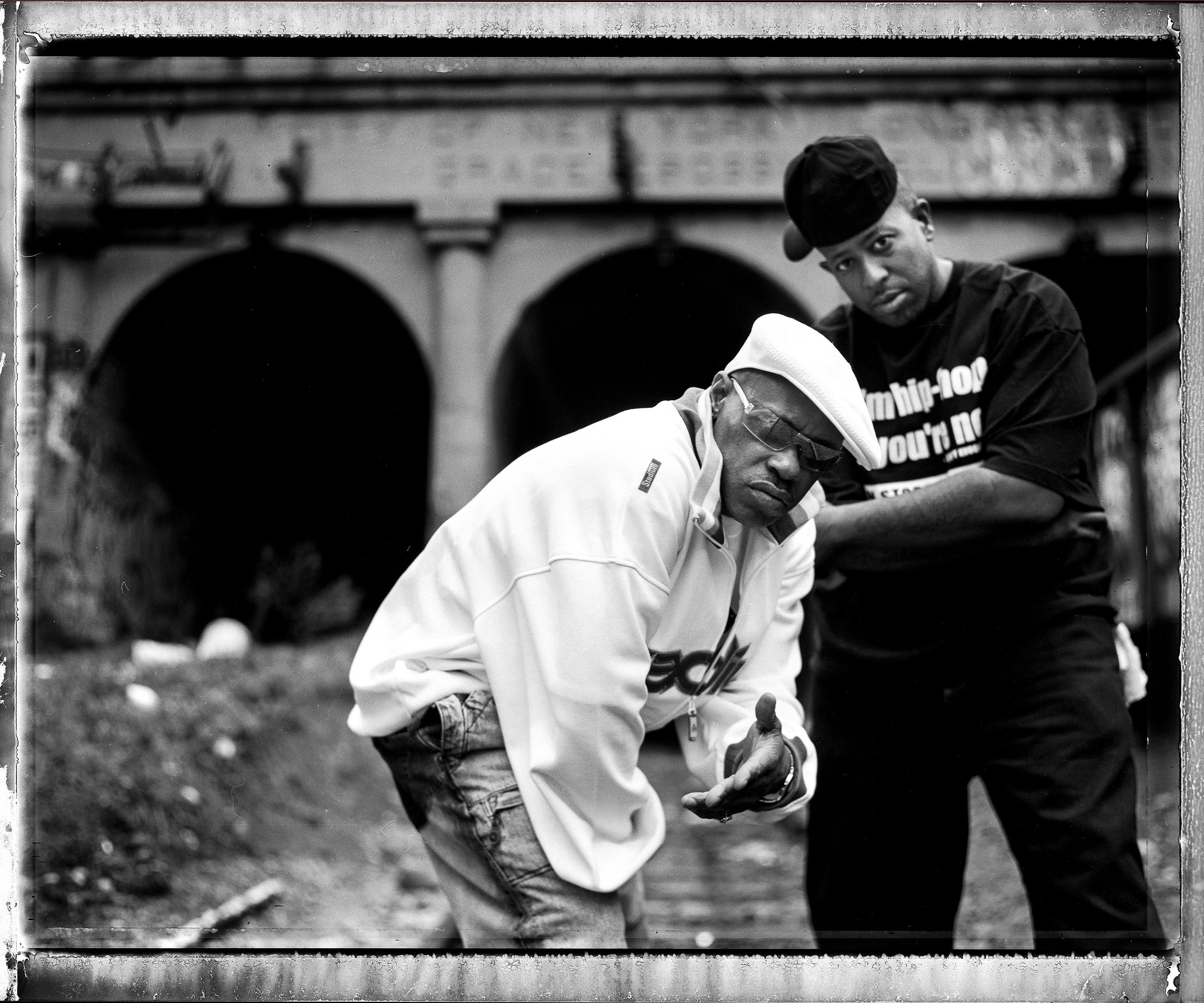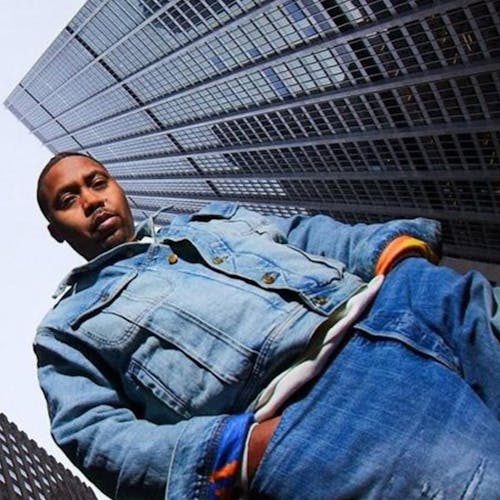
The Magic of D&D Studios
The Magic of D&D Studios
By Alec Banks
Published Mon, September 28, 2020 at 1:25 PM EDT
Gang Starr’s first two albums were recorded inside Chris Julian’s Calliope Studios on 37th Street and 8th Avenue in the heart of New York City’s Garment District. The engineer, Bob Power, had his hands in seminal works like De La Soul’s 3 Feet High and Rising (1989), A Tribe Called Quest’s People’s Instinctive Travels and the Paths of Rhythm (1990), 3rd Bass’ Derelicts of Dialect (1991), and Black Sheep’s A Wolf in Sheep’s Clothing (1991).
As Gang Starr was readying to record their third album, Daily Operation, at Calliope, Showbiz of D.I.T.C. (Diggin’ in the Crates) called DJ Premier to nearby D&D Studios to do the scratches on the remix to Lord Finesse’s “Return of the Funky Man.”
While a handful of Hip-Hop artists were already recording at D&D Studios, Premier’s experience inside David Lotwin and Doug Grama’s place would completely shift the trajectory of not only Gang Starr’s music but also of Hip-Hop as a whole.


Guru & DJ Premier / Photo By JONATHAN MANNION
Lotwin and Grama were childhood friends who were both enamored of music while growing up in the Five Towns in Long Island. Lotwin was the son of an attorney who worked closely with Peter Tosh’s manager, Danny Sims. When his father expressed to the Tosh camp that his son was musically inclined, David was whisked off to Jamaica for his formal musical education. He witnessed firsthand as Tosh crafted albums like Mama Africa and No Nuclear War.
“I was very young, and it was an incredible time,” Lotwin says. “I learned so much, particularly about the culture and engineering. Peter was very specific. He liked to have all the backing vocals and everything on the track before he sang his lead vocal, which is very unusual.”
While Lotwin was in Jamaica, Grama was interning at a studio called MNI and sharpening his own skills as an engineer. Upon his return to the states, Lotwin pursued a business degree at Curry College in Massachusetts, while Grama enrolled in Berklee College of Music, also in Massachusetts.
“About a year in, we said, ‘Ah, what are we doing?’ Lotwin recalls. “ ‘Let’s try do something and open a recording studio because that’s what we love.’ ”
The Bronx Connection opened in 1985. It shared a space with an auto body shop that specialized in collision repair. At night, the sounds of hammers and wrenches were replaced with the whirl coming from the Tascam half-inch tape track.
“It was the Mayflower as far as the ship,” Lotwin says of the studio. ‘We’d spend a half a day getting drum sounds, just working on the kick and the snare and microphone placement. We had nothing digital at the beginning.”
To draw customers, The Bronx Connection took out advertisements in pennysavers and in the back of The Village Voice. Since Lotwin had strong ties to Jamaica, they initially recorded reggae and ska acts. Lotwin insists his time in Jamaica played an integral role in creating a recording environment that was conducive to artists while also cultivating a spirit of collaboration among those who shared the space.
“It was very communal [in Jamaica],” Lotwin says. “Nobody was uptight at all, saying, ‘That’s my drumbeat,’ or, ‘That’s my rhythm.’ As long as it was reggae and it was real, everybody shared. And to some degree, Hip-Hop [at D&D] was like that.”
The Bronx Connection moved to the fourth floor at 320 W. 37th St. in the heart of the Garment District and rebranded as D&D Studios (referencing the first letters of their first names). Artists such as Peter Tosh, Dennis Brown, Beres Hammond, and Augustus Pablo became regulars in their little back corner of the building. As the influence of Hip-Hop grew, they continued to search for their niche with Latin acts like the Latin Rascals, TKA, and the Cover Girls. They eventually found momentum in the traditional Hip-Hop genre with inaugural sessions with artists like T La Rock and the Fat Boys.
But everything changed after Premier laid down the scratches for Lord Finesse, cutting up Guru’s voice from “Just To Get a Rep” into a repetitive refrain: “Mad brothers know his name. …”
“Showbiz was like, ‘I can’t stay, can you get the final mix and we hook up later?’ ” Premier recalls. “I was like, ‘Cool.’ Back then you bounced the final mix to a cassette. Once you approve it, then you bounce it to a half-inch tape, and you take that tape to mastering, and they got to run that reel to bounce it down. I had an incredible system in my Mazda MPV that everybody in New York knew me for. I put the mix in to listen to it and I was so blown away with the mix, I told the owner, ‘I want to do my next album here.’ They were like, ‘Cool.’ We booked a session and Daily Operation was born.”
As the desire for Premier’s sound spread throughout the city, it became an industry necessity to go see him at D&D Studios. An MC would get buzzed in through an airlock entry and take the elevator up to the fourth floor, which was eventually completely occupied by D&D studio operations.
“Everyone met in the main lounge,” Lotwin says. “A lot of stuff was chopped up in there and the creative juices were always flowing. No one wanted to miss out,” he says.
Premier set up permanent residency in the B Room with engineer Eddie Sancho, after using the secondary studio space for a single day and realizing it had a much better sound than the A Room, which had been primarily used to record live bands.
“Right then and there I was like, ‘Yo, I’m staying in here,’ and I never left,” Premier says.
Premier’s discography inside the B Room at D&D reads like applications to be on the Mount Rushmore of Hip-Hop: Mobb Deep, KRS-One, Nas, Big L, M.O.P, Jeru the Damaja, The Notorious B.I.G., and JAY-Z. On any given night, some, if not all, of those working with Premier could be seen shooting pool, drinking Bacardí Limón, or buying blunts from a vending machine in the main lounge.
“Everything was old, but everything always worked,” Lotwin says of the analog nature of the B Room. “Most studios had SSLs at that point — or Neve consoles and tape machines. We had older machines — MCIs, Sony 24-track machines, and Urei speakers. We had more of the stuff that Elvis would have used at the end of his career, so we had that older, thicker sound. Once you start doing records like we did, it permeated the walls.”
Grama and Lotwin eventually handed over the keys to Premier in 2003. He rechristened it HeadQCourterz in honor of his friend Kenneth “HeadQCourterz” Walker, who was fatally shot in 2002.
In January 2015, D&D Studios/HeadQCourterz officially shuttered. Premier moved all of the ephemera, including part of a wall with Guru’s lyrics of the last song Gang Starr worked on together. Today Premier calls Kaufman Astoria Studios in Long Island City, Queens, his home. But for Lotwin, D&D Studios will always be the place where everything changed for Premier, Doug, and himself.
“It became his home as his career built and skyrocketed,” he says. “It was all done at D&D.”
* Banner Image: Guru & DJ Premier / Photo by Jonathan Mannion



